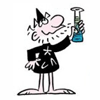These Puget Sound orcas could be designated as distinct species
Published in News & Features
—Bigg's hunt by stealth, quietly and in small groups of two to six. Residents roll out in a big crew of as many as 18 whales, using echolocation to ping and track their prey and call to one another as they hunt. The residents' sonar click sequences are produced on average six to 27 times more often and are twice as long as in Bigg's whales.
—Residents' seasonal movements have been linked to salmon species aggregations, while Bigg's seasonal peaks are associated with the pupping season of harbor seals and the migration of gray whales.
—Modern genetic tools show just how long ago and how completely Bigg's and residents separated themselves on the family tree, with no gene transfer between them since anywhere from 350,000 to as long as 700,000 years ago, scientists estimate.
Genome sequencing beginning in 2018 ultimately decoded the DNA of about 100 southern resident killer whales, living and dead. That opened a panoramic window into their nature. The findings, published in 2023, for one thing showed how inbred the southern residents are — yet another risk to their survival.
The genetics of the residents were once such a muddle, he noted, that NOAA rejected the initial petition for listing the southern residents as an endangered species in 2002, on the basis that the whales did not meet the criteria to be even a distinct population.
It took a district-court ruling to goad the agency into doing two things at once: determining the data it needed to understand the diversity of killer whales, and do it without traditional methods. "Most species live on land, or can be hauled into nets, and are set apart by differences in what they look like," Morin said. "That wasn't going to work here."
Eventually the agency determined the residents likely were a distinct population from other killer whales. While the agency didn't have all it needed to prove it, the legal requirement to rely on its best available science in making a determination tipped the scales in favor of finally listing the southern residents in 2005 as a distinct, endangered population.
Now has come the next step, of species designation.
"It's an interesting story, a fascinating melding of scientific knowledge in the mid- to late 1800s with the very, very high-tech, gee-whiz research," said Thomas Jefferson, an independent marine biologist based at NOAA's Southwest Fisheries Science Center, and an author on the paper. "It is interesting it can be put together and make a cohesive story from such a wide range of information."
You are what you eat
...continued
©2024 The Seattle Times. Visit seattletimes.com. Distributed by Tribune Content Agency, LLC.






Comments